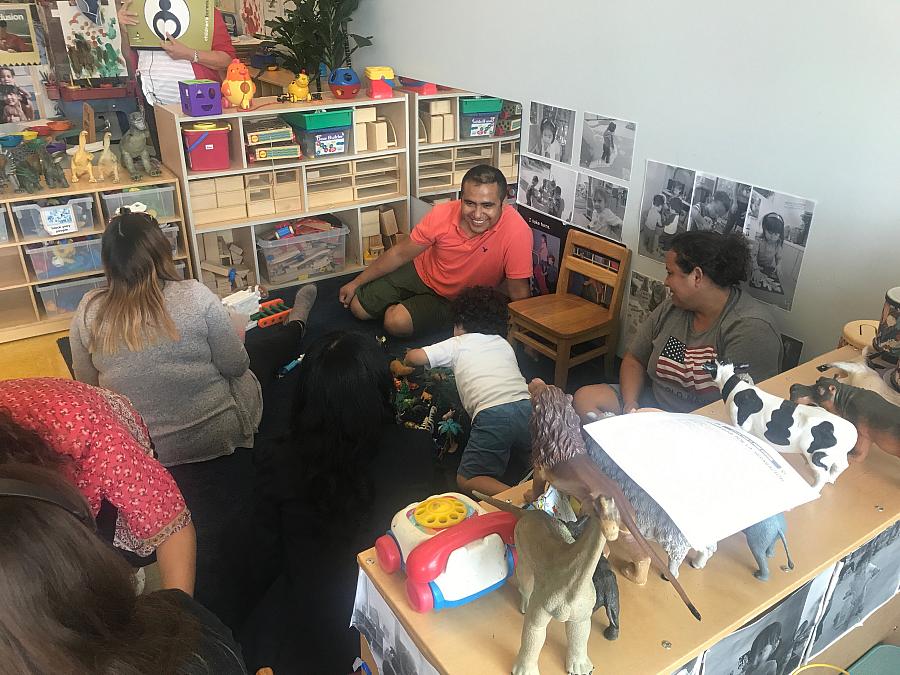In some of Los Angeles' poorest neighborhoods, a rich cluster of services targets underserved kids

A family engages in facilitated play time with their child at Magnolia Place.
In a dense 5-square-mile swath of land that includes Los Angeles neighborhoods such as Pico Union, West Adams and the North Figueroa Corridor, some 35,000 children live, play and go to school. Many are facing steep odds stacked against them.
Over 70 percent of these kids are not meeting grade-level reading standards by third grade, and the obesity rate is more than 40 percent for kids in the area. The population is three-quarters Hispanic and 65 percent live below the poverty line.
Those challenges were the inspiration for the Magnolia Place Community Initiative, which the 2017 National Fellows toured on Monday. The initiative brings together more than 70 county, city and community services and organizations to make lives better, especially for children.
“When a family comes walking in, we need to open more than one door for them,” said Sam Joo, director of Magnolia Community Initiative Children's Bureau. Joo says the interdisciplinary approach is core to the mission of Magnolia — and it’s a framework that can be scaled up nationally to fit many communities. “This area is the most densely populated in L.A. County,” says Joo. If solutions can work here, they may work in lots of other areas.
At Magnolia, people can find a variety of services, from a health clinic that serves everyone regardless of their ability to pay, to a bank branch, loan services, financial counseling, educational opportunities and county services. The services can reach across silos and work outside their traditional boundaries. For example, the clinic helps patients negotiate with landlords to help clean up buildings that may be making them sick.
There is also a wing of the building that belongs to the Children’s Bureau, which provides everything from school readiness programs and parenting groups to mental health services for children who have experienced abuse.
The Initiative's leaders believe that the combination of four factors — nurturing parents, good health, financial stability and educational success — can improve the neighborhood and improve the chances that children will thrive.
Alex Morales, Children’s Bureau’s president and CEO, tells the fellows that he began his career as a social worker in Los Angeles, and he kept seeing families and children completely overwhelmed by their circumstances. “I was concerned about child abuse, but what I found was an educational failure,” he said.
The building also houses LIFT, a national nonprofit dedicated to ending intergenerational poverty by connecting parents with financial tools and resources they need. The nonprofit uses trained volunteers — mostly college students — to advocate for low-income individuals and families. LIFT volunteers work one-on-one with clients to help them find jobs, safe and stable housing, public benefits and tax credits, and referrals for critical services like childcare and legal assistance.
These trusted relationships with volunteer advocates can do more than just raise families from poverty. They can also improve health. Research has shown that anxiety and depression are frequent side effects of living in poverty, and that these issues exacerbate the stressors already faced by families living in poverty. So with financial coaching and improvement, mental health may also begin to improve, LIFT’s advocates hope.
A small free library, stocked with books and cozy nooks to curl up, sits in one corner of the building. Joo says he hopes that patients waiting to be seen in the clinic will come and read to their kids while they wait for their appointment time. It’s another example of how multiple services can work together in the same building. “We’re trying to figure out ways to create cross-sector partnerships that people wouldn’t normally think about,” said Joo.

